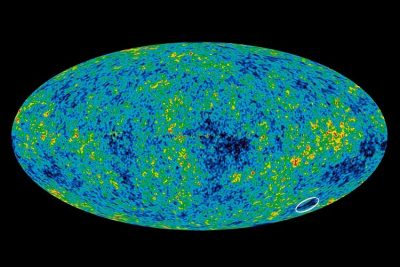Graham’s Number: A Finite Number That Cannot Be Contemplated
Share
The universe is really, really, really big. It has been estimated that the universe has a diameter of about 93 billion light-years and that’s a lot of space. What if I told you that there wasn’t enough space in all of the universe to write a finite number? No kidding, this is the true case of Graham’s number. Scientists usually use the term Planck volume, which is equivalent to 4.2217 x 10 -105 m³, for such measurements. For those of you who aren’t so fond of math, just remember that this is the smallest scale of measurement used by scientist, usually physicists.
Back to the topic, if each digit of Graham’s number occupied just one ‘Planck volume’, still, there would not be enough space in the observable universe to completely write it down. According to Brilliant.org, ‘Graham’s number is a tremendously large finite number that is a proven upper bound to the solution of a certain problem in Ramsey theory.’ It was discovered by Ronald Graham who was attempting to find a solution to the same problem. While Graham couldn’t find the solution, he proved that the solution to the problem was less than his number.
Graham’s Number is widely recognized as one of the biggest numbers which have been used in proving a mathematical concept. It made into the Guinness Book of World Record for the same in 1980. With all that being said, you might be wondering on how do we define this number, after all, it is a finite number. The Graham’s number is too big to be written in normal digit form. It is even too big to be written in the forms of exponents or power tower forms (for example 2 2 =4 ), something that most of us are quite familiar with. Fortunately, this seemingly huge number can be expressed with the help of what, in mathematics, is known as the Knuth’s Up-Arrow notation. Knuth’s Up-Arrow notation is just a fancy way of defining powers of the numbers, for example,

If we repeat this process and keep going till g 64 , we get Graham’s Number or G. Graham’s number is huge and has a very, very large amount of digits. The human brain is not efficient or capable enough of storing such a large amount of information and could cause the formation of a black hole in the brain if tried to do so. We might never be able to find out the first digit of Graham’s number, but we know that its last digit is 7. In fact, Graham’s number has been calculated backwards, we know around 400 to 500 of its last digits. While no matter how seemingly big or mind-boggling this number seems to be, it is still a zero to infinity.
Enjoyed this article? Also, check out “Infinite Monkey Theorem: Can Monkeys Type Up the Entire Works of Shakespeare?“.
Recommended Read:
The Colossal Book of Mathematics – Classic Puzzles, Paradoxes & Problems | By Martin Gardner
Fact Analysis:
STSTW Media strives to deliver accurate information through careful research. However, things can go wrong. If you find the above article inaccurate or biased, please let us know at [email protected]













